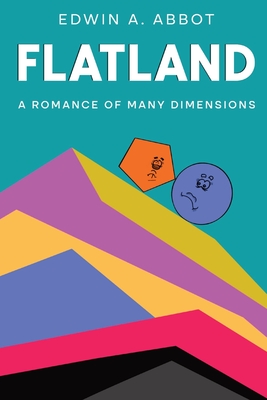Section 9: Of the Universal Colour Bill
bySection 9 captures a vivid and elegant moment in Flatland’s cultural history, when color had transformed even the simplest gatherings into breathtaking events. At a social function, the crowd itself became a visual spectacle, each figure dazzling in a unique hue. In public settings such as churches and theaters, these visual expressions grew so rich that they began to overwhelm even the most disciplined minds. The military review was the most splendid of all, where formations of twenty thousand Isosceles revealed vibrant flashes of orange from their sharpest angles, while Equilateral soldiers displayed patriotic shades of red, white, and blue. Squares, adorned in vivid tones, maneuvered with their brightly colored artillery, and the graceful Pentagons and Hexagons swept across the field, embodying both duty and artistry. At that moment, beauty and order coexisted, and the power of appearance rose to match that of logic. Language itself took on a poetic quality, echoing this golden age in every rhythm and phrase.
Yet as the visual appeal of society grew, its intellectual core began to deteriorate. The ancient Art of Sight Recognition—once essential for understanding and safety—lost value and vanished from daily practice. With color serving as the new identifier, disciplines like Geometry, Statics, and Kinetics were gradually dropped from academic programs. Even tactile learning, once necessary for the lower classes, was no longer emphasized. This shift gave rise to a troubling imbalance: the working classes, freed from traditional educational burdens, began to grow in number and ambition. Their confidence, bolstered by color-coded equality, led them to dismiss the distinction between themselves and the ruling shapes. Over time, this disregard expanded into resentment toward the intellectual arts, which were now framed as tools of oppression rather than knowledge. The decline of structured learning marked the start of a dangerous period in Flatland’s history.
The situation worsened as Isosceles soldiers and laborers demanded complete equality with the ruling Polygons. They believed that, since color recognition allowed everyone to be visually similar, no one had a right to claim superiority. They argued that the arts associated with high intelligence were designed only to maintain power. This sentiment fueled a movement to abolish all specialized knowledge and practices labeled as “aristocratic monopolies.” The proposed legislation was bold and disruptive. It would require everyone, including Priests and Women, to adopt standardized colors to obscure distinctions of class and form. Such a move was presented as progressive, even noble—meant to create unity and respect through uniform appearance. But beneath the surface, it aimed to destroy the structural integrity of Flatland society.
The origin of the Colour Bill traced back not to a soldier or worker, but to an Irregular Circle—a figure who should have been removed in youth but instead survived to sow dissent. With cunning and bitterness, he crafted a plan that would render the rulers visually indistinguishable from the common classes. The idea was to erode authority from within, using appearance to dismantle respect. The boldness of the proposal ignited fierce debates, particularly because it promised gains for the most marginalized group: the Women. For the first time, they saw an opportunity to be viewed with the same dignity as the highest Priests, at least in outward form. Their support added momentum to the movement, making resistance more complex.
The Colour Bill had a secondary and equally calculated purpose—it would break the intellectual discipline of the Priests. Sight Recognition was not just a tool; it was a form of mental refinement, sharpening perception and judgment. By rendering it obsolete, the bill aimed to dull the sharpest minds in Flatland, weakening the very leaders who preserved order. If successful, it would reduce governance to guesswork and erode the foundation of Flatland’s theocratic rule. The Circles, unable to rely on logic or training, would become helpless figureheads in a society dominated by visual tricks. What seemed like a bill of equality was, in truth, an attempt to unmake the very structure that defined the world. Behind a campaign of fairness hid a strategy for collapse.
This moment in Flatland’s history serves as a warning about the cost of confusing equality with sameness. True progress involves elevating all, not reducing everyone to a single standard. When identity is masked for the sake of superficial harmony, the result is not justice but instability. Systems built on deep knowledge cannot be replaced with decoration. Visual appeal may inspire, but without wisdom, it becomes a distraction. The Colour Bill did not aim to teach—it aimed to erase. Its passing would have changed Flatland not into a utopia, but into a blur of indistinct forms with no foundation for leadership or growth. This chapter stands as both a critique and a caution, showing how even noble intentions can be used to serve destructive ends.


